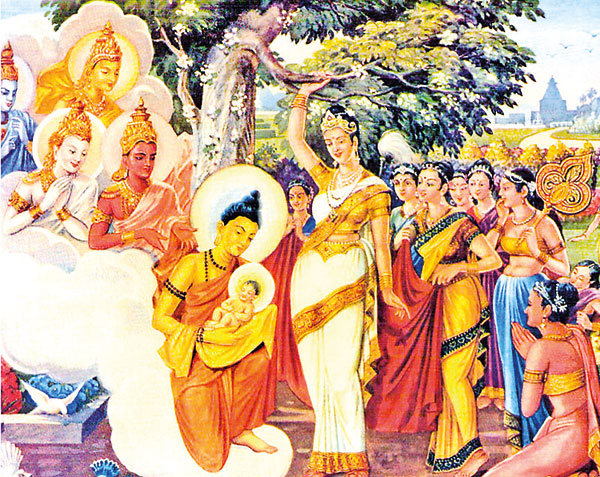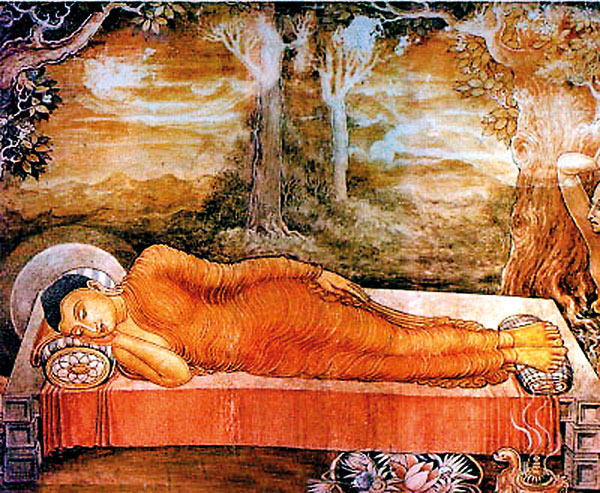Significance of Vesak

Enlightenment - Painting by Henry Dharmasena in Kelaniya Raja Maha Vihara.
Thrice-blessed Day is the simple way of explaining what Vesak Day means. Vesak marks the Birth, Enlightenment and Passing away of the Buddha. All these three events took place on the Full Moown Poya Day in the month of Vesak – presently the month of May.
The Buddhists observe ‘Ata Sil’ - Eight Precepts on Poya days as against ‘Pan Sil’ – the Five Precepts normally observed every day. Even those who may not observe ‘ata sil’ on Poya days make it a point to observe ‘sil’ on Vesak Poya day. Many, if not all, will skip the night meal on Vesak day and observe ‘sil’
till the following morning.
The Bodhisatva – as the Buddha was referred to prior to attaining Enlightenment or Buddhahood – spent hundreds of births in his effort to become the Buddha. Over 550 Jataka tales describe the different births of the Bodhisatva when he made so many sacrifices in the great effort. They were all aimed at a single goal – attaining Buddhahood.
Prince Siddhartha was born in the year 623 BC (Before Christ) in Nepal as an Indian Sakya prince. He was born at Lumbini Park while his mother,
Queen Maya was on her way to her parents’ home with the palace retinue.
He led a normal layman’s life, was married to Princess Yasodhara until the day a son was born. On that day he quit the palace and started leading the life
of an ascetic. He was then 29 years old.
His goal was to find the path for all living beings to move away from sorrow and find eternal solace with no future births.
It was no easy task but he was determined to find the way.
For six years he wandered about, meeting well-known religious teachers and studying their teachings.
He was not satisfied and decided to try on his own.
When he was 35, one evening on Vesak Poya day seated under a tree on the bank of the river Neranjara at Buddha-Gaya, he attained Enlightenment and he came to be known as Gotama the Buddha.
 From that day, for 45 years he taught everyone, irrespective of their class or creed, being rich or poor, so long as they were ready to follow the Dhamma he preached.
From that day, for 45 years he taught everyone, irrespective of their class or creed, being rich or poor, so long as they were ready to follow the Dhamma he preached.
At the age of 80, the Buddha passed away at Kusinara in modern Uttar Pradesh in India.
By then there was a large number of monks who followed the Buddha’s teaching and they took Buddhism throughout the world. It thus became a universal religion.
In addition to following the Dhamma, Buddhists began to pay homage to the Buddha through several forms of worship. They built statues and stupas, offered flowers and lit lamps. That is how Vesak Day became a ‘day of lights’.
The Buddha’s life story was related through paintings in temples. Seeing them, the devotion of the average Buddhist devotees increased.
On Vesak Day, pandals were put up at strategic locations for devotees to admire creations by painters and recall the life story of the Buddha.



